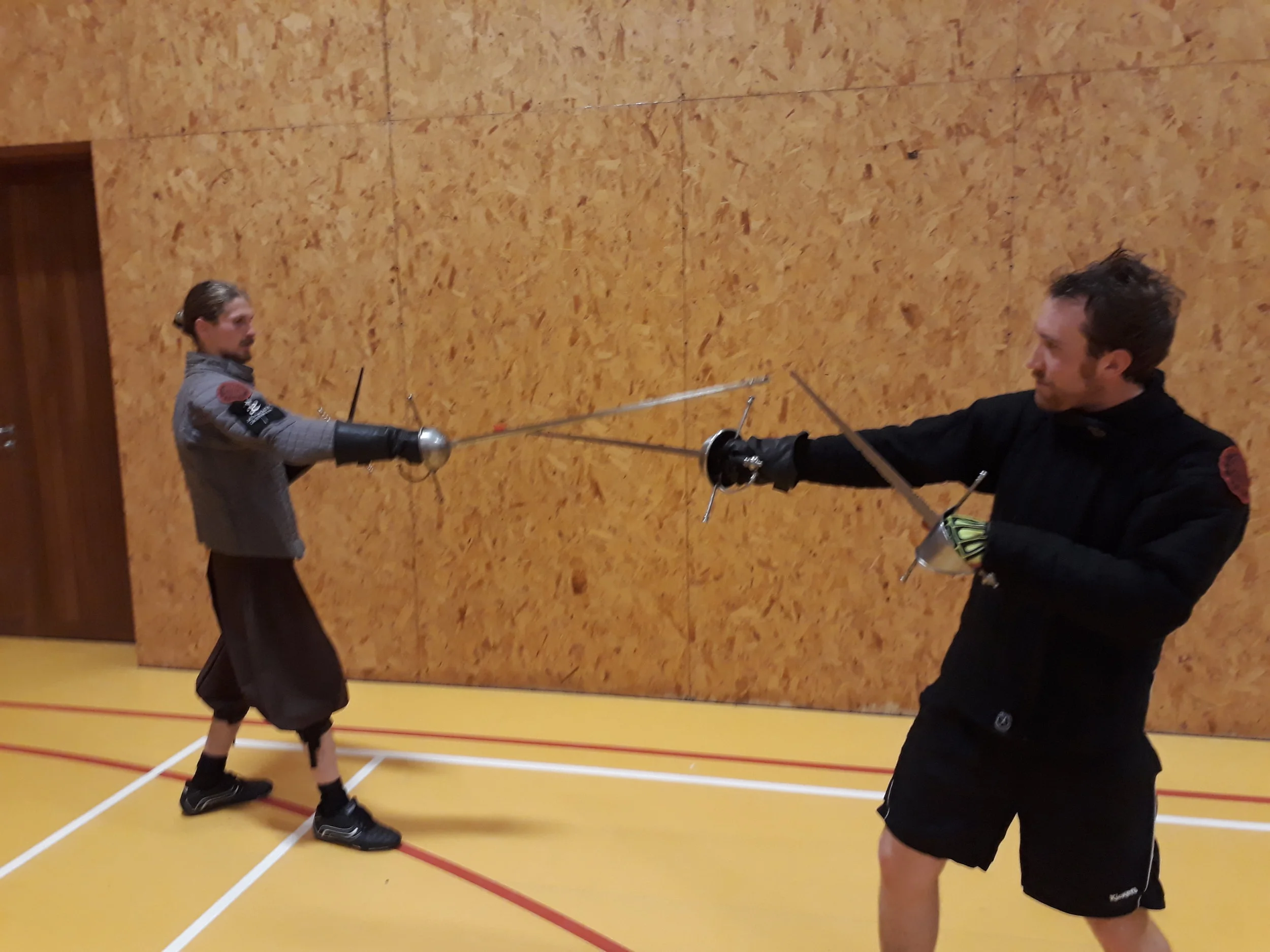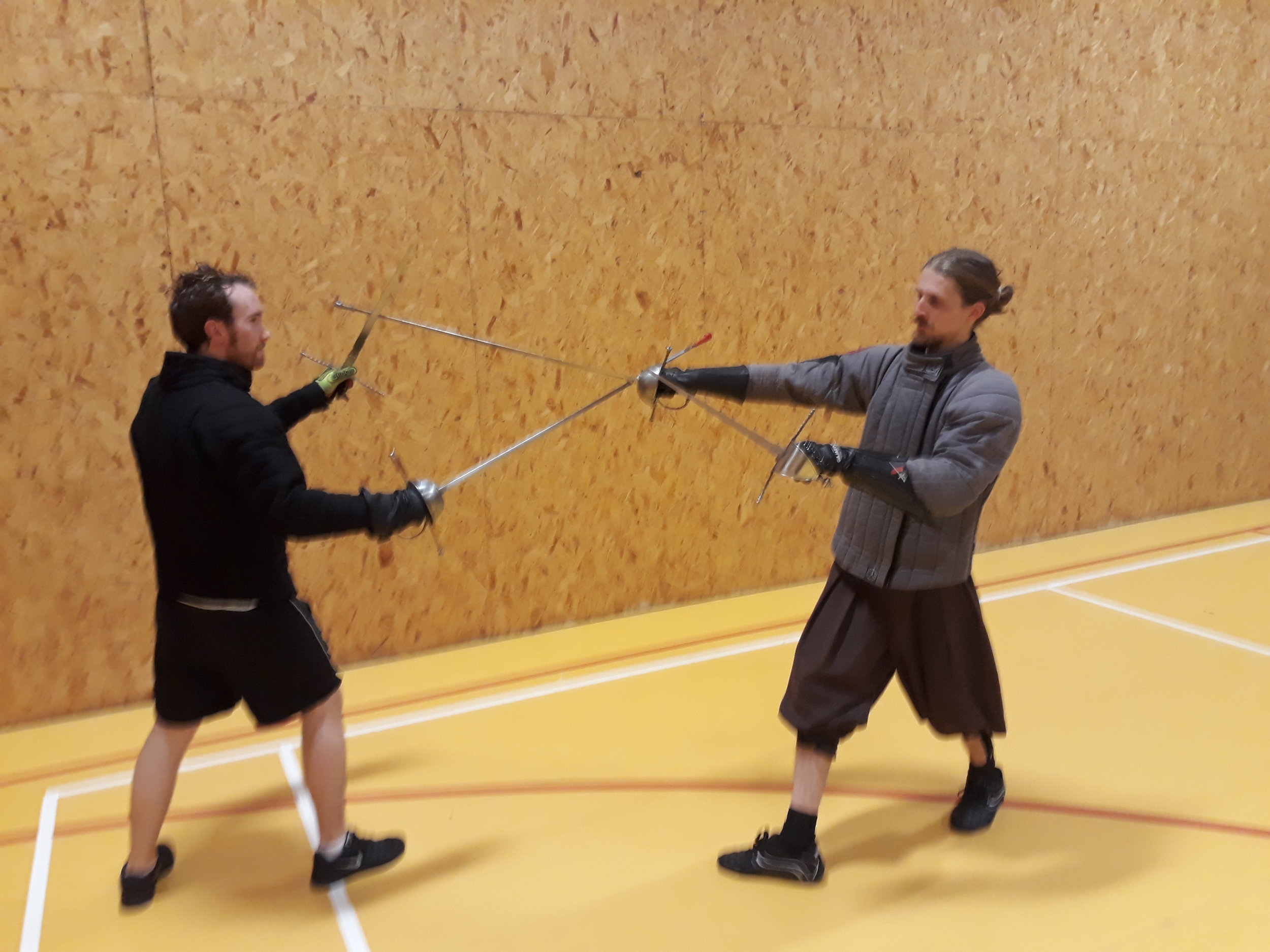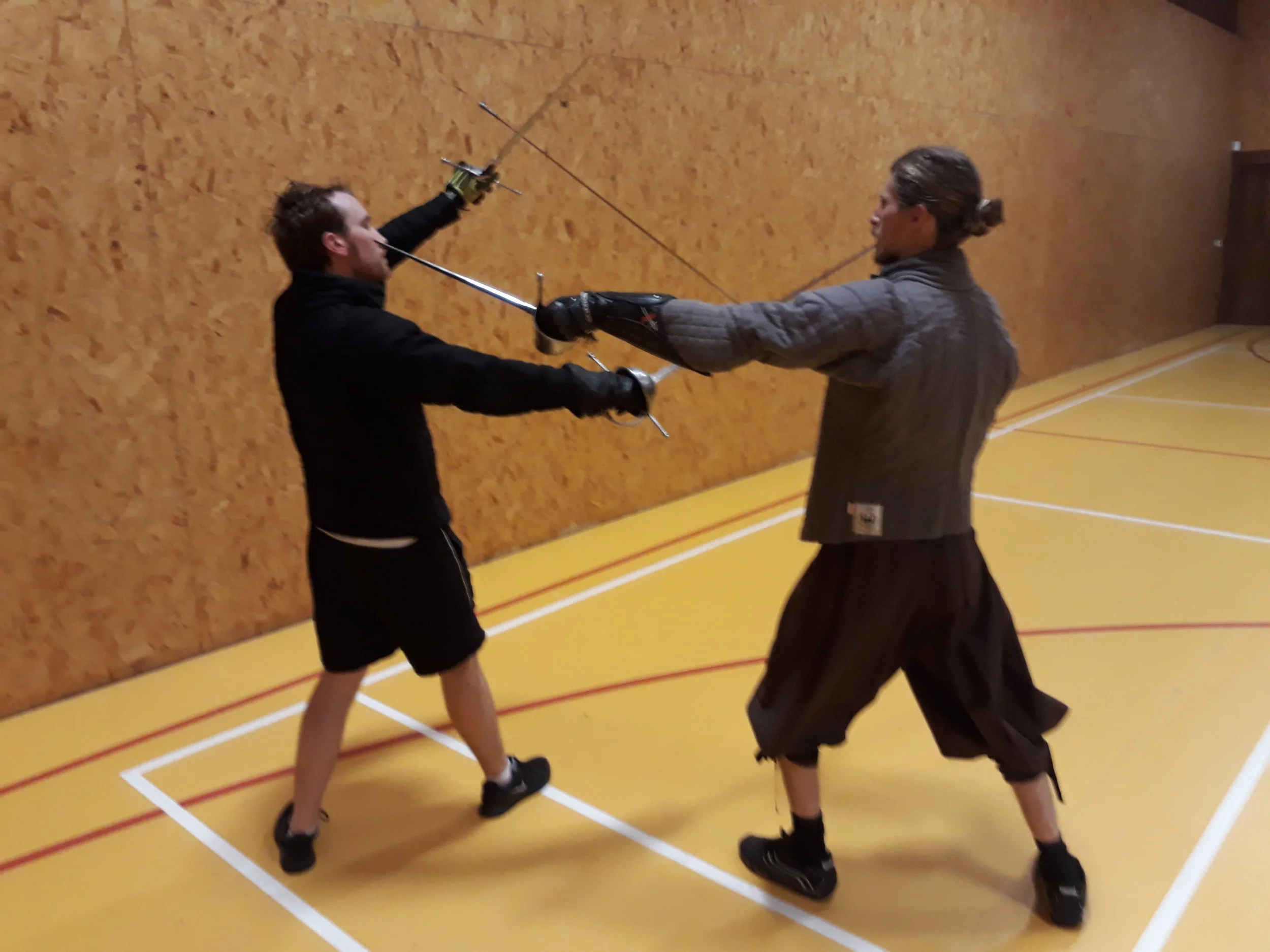The iconic
Sword and Dagger.
Introduction
For generations the sword has caught the imagination, either on stage or on screen the sword has been iconic. Not only a symbol of power, justice but also of entertainment and of course martial arts. However there is one particular combination that is even more icon then the sword alone. It rivals even the massive popularity of eastern martial arts in film.
I speak of course of the sword and dagger, more specifically the cup hilt sword and swept hilt dagger. Never has a combination of weapons been so popular in fiction, stage or film. Weather capturing your minds with tales of swash buckling pirates, valiant musketeers or the plays of Shakespeare. Nothing quite rivals this iconic weapons combination.
The sword and dagger as a combination has been used throughout Western Europe, it is the main off hand weapon of the rapier and rightly so, as it opens up a world of possibilities when in a combative situation.
With a massive number of possible blade lengths, hilt configurations, weight distribution and balance these weapons have seen more change and variation then most. Being used as far back as the 15th century with side swords (thicker more predominantly cutting swords) in to the transitional side sword (starting to become lighter and thinner on the blade, more rapier similar to the rapier) and eventually evolving into the rapier.
This article I will delve into a bit of the history behind the Spanish rapier and demonstration its basic form and function.
Use of the dagger
When looking at fighting with a combination of weapons, either sword and dagger or sword and shield. You first must relies you are fighting with mainly the sword alone and using the offhand weapon as a support either offensively or defensively. This is quite noticeable with the Spanish system, as we place the sword out front to maintain distance and keep the dagger held back. This in stark contrast to most Italian and French systems where the dagger is extended out and the sword is kept back behind the dagger.
The reason for the extension of the sword over the dagger is because we keep the most distance between us and the target with the sword extended, as well as having our sword free to bind (placing our sword onto the opponents blade to control it with leverage) and eventually transfer (move the opponents blade onto our dagger using our sword) the opponents blade onto your dagger.
This is not to say that the dagger cannot be used offensively, for instance the sword can be used to trick the opponent into binding with their dagger and sword on to your sword enabling you to quickly close the first vertical plan (straight line between you and the opponent, distance and line of attack) with your dagger and thrust into the opponents head or chest.
The weapons
The dagger is what is known as a swept hilt dagger, meaning the hand is protected with a sheet of metal curving over the knuckles. This is great from a protection perspective but also as an offensive weapon due to the ability to punch with the hilt as well as cut and thrust with the blade. However I do recommend that you own and train with two types of dagger, one with an enclosed hilt and one without as it is important to realize and adapt to the difference in hand protection.
The quillions are long for better binding and control of the opponent’s blade, this was particularly noticeable with Spanish designs as they favoured the higher level of control it gave in the bind.
The blade itself comes with partial serration to better bind the opponent’s blade, as the serration acts as teeth sticking to the blade. We use both serrated and none serrated blades.
The sword is a typical cup hilt long bladed rapier with a slightly thicker than normal blade in order to allow for stronger cuts while maintaining strong thrusts and nimble handling.
Transferring with the sword to the dagger.
Starting position, picture (A) stand with the rapier held out at shoulder level, the feet about half a foot to a foot apart. The dagger held in just at the elbow of the right arm. The Dagger is held out just at the edge of the left hip. (Think of holding a steering wheel in front of you, the dagger and sword travel on the wheel but never past it) The knees have a slight bend and the back is held straight. The body is not profiled off but at a 45degree angle (left shoulder slightly forward)
Both you and your opponent are standing at the medio de proporcion (medium distance).
Take a lateral step to the left moving your left foot first then the right foot, at the same time apply pressure to the opponent’s sword with your sword pushing their point off to your left side as your right foot moves to meet your left foot. (See picture C)
As the feet move the hand never stops, as the feet gather together your sword performs a circular motion counter clockwise controlling your opponent’s blade. Turning it in a counter clockwise circle.
Think of a clock, you start the circle counter clockwise going from 9 all the way to 1, as soon as their blade reaches 1 you use the momentum to flick their blade over to your left side and place your dagger on the inside of their blade locking it down freeing your sword to be able to strike the opponent. At the same time you take a forward transvers step (step the left leg diagonally forward to the left pushing the opponent’s blade further off with your dagger) and thrust the opponent in the chest or head. (See picture D)
This is a very fast motion all happening quickly, however this is a concept and principle that is meant to be broken down and used in an unpredictable situation.
Binding with the sword and striking with the dagger
Above we looked at using the sword to transfer the opponent’s blade to our dagger and controlling it with the dagger while striking with the sword. This time we will look at tricking the opponent and binding both their sword and dagger with our own sword.
Start as we did above, both fighters in the medio da perporcion. (See picture E)
Place your sword on the outside of your opponent’s sword. Take a lateral step to the left with the left leg leading and push the opponent’s blade off to your right side while brining your right leg over to meet your left.
Now perform a forward diagonal step with the right leg (transvers step) to the left while at the same time thrusting with your sword, this has to possibilities. One the thrust lands or the opponent is tricked into parrying your thrust with his dagger.
For this example we will say they parry with the dagger. This in turn traps both their sword and dagger with your sword as your sword is controlling their sword and their dagger is stuck controlling your sword allowing your dagger to strike.
As soon as the above happens step a curved step with your left leg (circular step) brining your dagger up and striking a thrust to the opponents head, chest or underarm area.
Conclusion
Like many aspects of martial arts, I would need far more pages to fully explain all there is to the art of sword and dagger. However I hope that this article has shed some light on this weapon set and the way it was used. It is best to look at the techniques above as concepts and principles and how you can apply them to changing situations rather than them regimented.
Until next time! enjoy the holidays!










